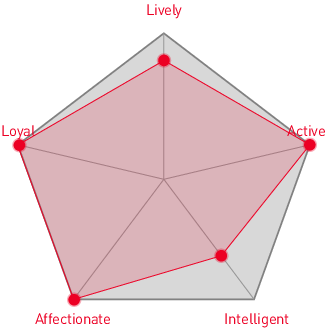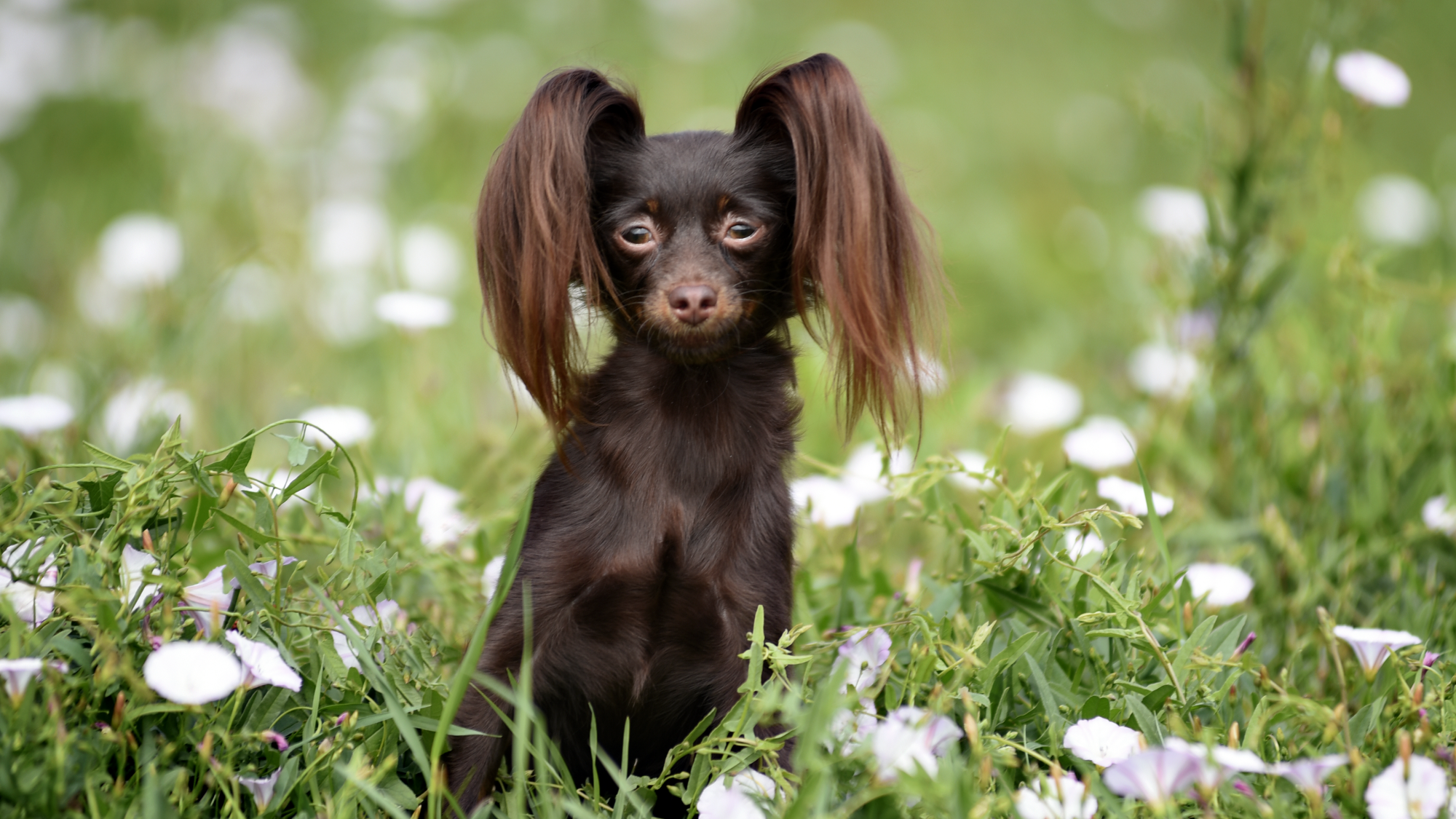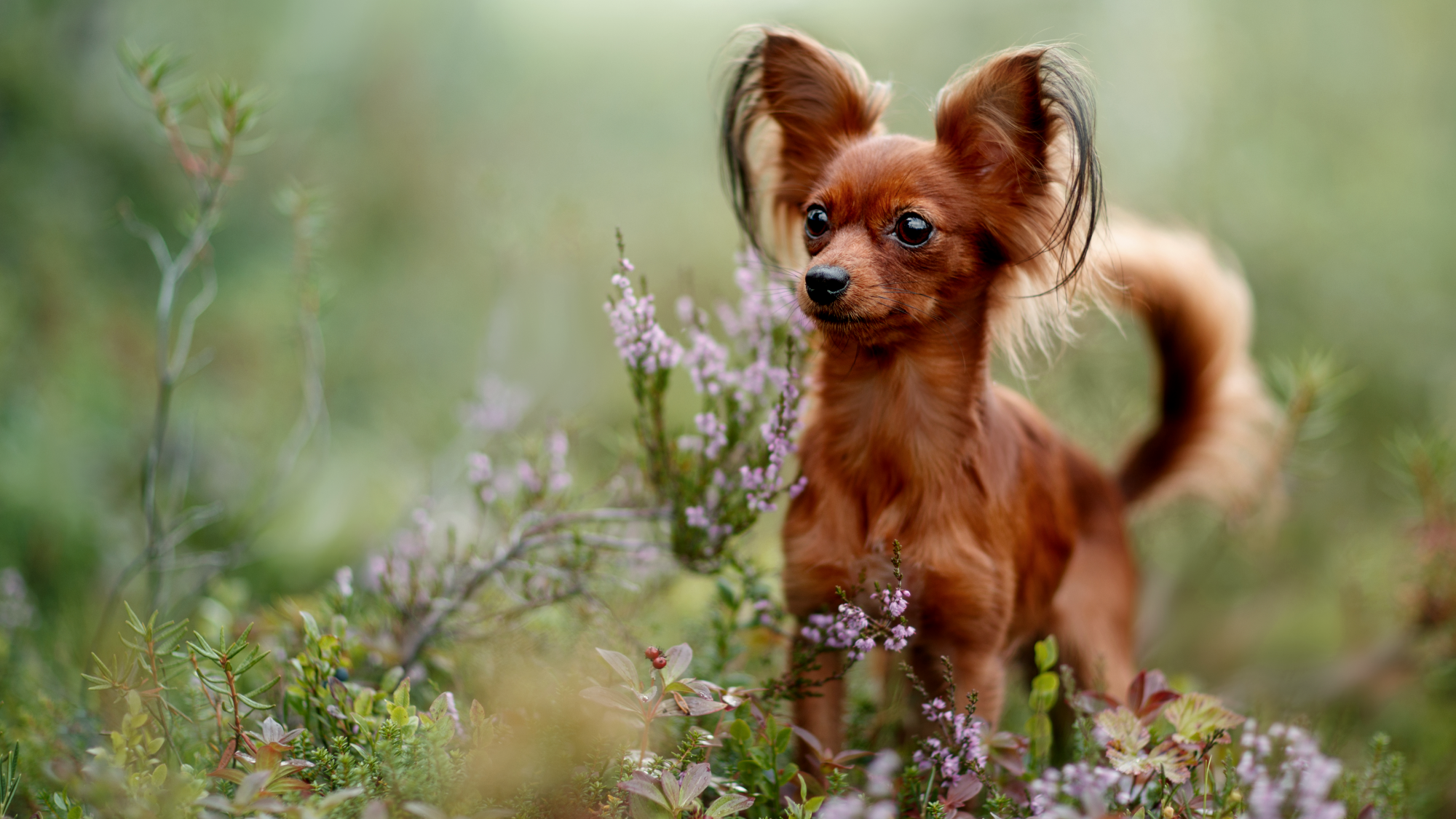
Let's talk Russian Toys
As one of the smallest known dog breeds (they top out at no more than 3kg, or 7 pounds), they’re minute for sure but as everybody knows, great things come in small packages. What they may not have in size, the Russian Toy makes up for in spirit. Elegance defines this dog, with their long limbs and a noble head that houses a wise glance. A wispy tail finishes off a physicality that signifies what’s inside: a dog that’s spunky and super affectionate, and for whom snuggle time is high on the list.Official name: Russian Toy
Other names: Russian Toy Terrier, Russian Terrier, Moscow Toy Terrier, Little Russian Dog, Moscow Long-Haired Toy Terrier
Origins: Russia

| Drooling tendencies |  |
Warm weather? |  |
| Shedding level |  |
Suited to apartment living? |  |
| *Energy Level | Moderate | *Friendly pet? |
 |
| Compatibility with other pets |  |
*Can stay alone? |  |
* We advise against leaving pets alone for long stretches. Companionship can prevent emotional distress and destructive behaviour. Speak to your veterinarian for recommendations.
Every pet is different, even within a breed; this snapshot of this breed specifics should be taken as an indication.
For a happy healthy and well-behaved pet, we recommend educating and socializing your pet as well as covering their basic welfare needs (and their social and behavioral needs).
Pets should never be left unsupervised with a child.
Contact your breeder or veterinarian for further advice.


| Baby age | Birth to 2 months |
| Puppy age | 2 to 10 months |
| Adult age | 10 months to 8 years |
| Mature age | 8 to 12 years |
| Senior age | From 12 years |

1/7
Get to know the Russian Toy
All you need to know about the breed
Pint-sized and proud, the Russian Toy was long the favourite of the Russian aristocracy, who valued the dog for their diminutive size and big attitude. It’s that august perspective that’s helped to carry this small breed through a very big world.
Their coats come in two varieties: long-haired, complete with charming fringes which gives them an almost mischievous appearance, and smooth-haired, with a short finish that’s sleek to the touch. This breed also shines in a variety of coat colours, from black and tan, to a blue hue and tan, to red, red sable, or red brown. To note: The smooth-haired variety of Russian Toy maintains a more terrier-like quality than the long-haired. Perhaps it’s just their way to stand out from the crowd.
Overall though, this is one laid-back breed. They get along fine with children, once trained, and other pets. Take care around all family members though as this dog’s petite size could have them easily - and literally - overlooked causing accidents to happen. The Russian Toy bonds extremely strongly to their owners and are very content with snoozing in your lap a good part of the day. And cavorting in the garden? Bring it on.

2/7
2 facts about Russian Toys
1. All grown in
The fur of the Russian Toy dog comes in two varieties - smooth-haired or long-haired - with the latter variety not growing in completely until the dog is more than a year old. The full fringing around their neck, ears, and tail comes in entirely when the Russian Toy is three years of age.
2. (Almost) gender neutral
There is little-to-no sexual dimorphism in the Russian Toy breed, which means the same in terms of physicality between the sexes, only a marked difference in their behaviour. Most female and male dogs display differences in size, facial attributes, and some physical functions but not so for anything else when it comes to this petite breed.
History of the breed
It was with the arrival of the English Toy Terrier in Russia in the 18th century that the first signs of the Russian Toy occurred. So valued was this dog that evidence of their appearance can be seen at the Zoological Museum in St. Petersburg, where a preserved specimen credited as belonging to Peter the Great is found. The breed quickly gained huge popularity in social and aristocratic circles, so much so that they typically appeared at soirées and even the opera.
By the beginning of the 20th century, the Russian Toy had firmly come into their own as a singular breed but the Russian Revolution of 1917 nearly decimated them. As World War I subsided, great efforts were made to bring back their numbers in all of Russia’s major cities. In 1958, one unique puppy with a genetic mutation was born, thus bringing the long-haired variety into existence.
The Fédération Cynologique Internationale (FCI) recognised the Russian Toy breed in 2006 and the American Kennel Club only at the beginning of 2022.

4/7
From head to tail
Physical characteristics of Russian Toys
1. Ears
Triangular ears at medium height, hanging at side of head.
2. Head
Strong head in proportion to body.
3. Body
Giant imposing body, deep wide chest, very muscular legs, straight back.
4. Tail
Long bushy tail, at medium height, hooked at end.
5. Coat
Coarse topcoat; short, fine undercoat on both short- and long-haired variety.

5/7
Things to look out for
From specific breed traits to a general health overview, here are some interesting facts about your Russian Toy

6/7
Caring for your Russian Toy
Grooming, training and exercise tips
There are two coat varieties of the Russian Toy: the smooth-haired, whose very short hair requires only weekly brushing, and the long-haired, which does need maintenance, as the hair can grow as long as three inches. Grooming your long-haired Russian Toy should happen two to three times a week, paying attention to fringing on their ears and rear limbs. Baths should only happen occasionally. Brush their teeth daily, if you can, as small dogs are especially prone to dental problems. Trim nails often, and clean eyes and ears to avoid infection. The Russian Toy breed likes to run in the yard so exercise will be a breeze, for both you and them. This vivacious dog actually excels in mini-agility and obedience competitions. When they’re not flying around the ring or the garden, training the Russian Toy, as one can imagine, is also a simple chore. One of the characteristics of the breed is their desire to please so they are apt to take direction well. They can be a bit defiant when it comes to commands so early socialisation is a good idea for this dog.
7/7
All about Russian Toys
The petite Russian Toy dog has many pluses but one of the best is their portability: They are one of the smallest dog breeds in the world, never mind being very personable and one that bonds strongly to owners. As a dog with an average activity level, going along for the ride anytime is just fine with them.
Despite their small size, the Russian Toy doesn’t get fatigued any more than any other breed. They’re known to have a medium amount of energy and will need sufficient daily walks or time in the yard where they can run around. Whether inside or out, your Russian Toy will easily follow exercise with their favourite activity of all: laptime.
translations.feature.breeds.otherbreeds
Read more on this topic

How your dog's nutrition needs change with age

How to adopt a dog

Things to consider before getting a dog
Sources
1 - Veterinary Centers of America https://vcahospitals.com/
2 - Royal Canin Dog Encyclopaedia. Ed 2010 and 2020
3 - Banfield Pet Hospital https://www.banfield.com/
4 - Royal Canin BHN Product Book
5 - American Kennel Club https://www.akc.org/

